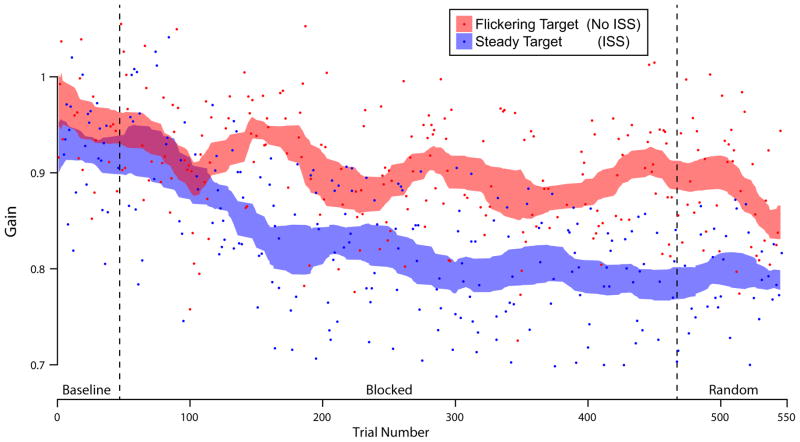Figure 6.
Contextual saccade adaptation driven by purely visual properties of the target. The individual saccade gain for each trial (dots) in one experiment in a representative subject are plotted with their moving averages (+/− 95% confidence intervals, shaded curves) for each context. On each trial, the target was either a flickering spot (luminance switching between two values at 5 Hz), or a non-flickering spot target. In the Blocked phase, 3–10 consecutive trials were of one target type, before switching to the other target context; in the Random phase, target contexts switched randomly trial-to-trial. After the Baseline phase, one target type always stepped backwards during saccades (ISS), and the other type did not (No ISS). The gradually separating curves show the build-up of contextual adaptation to the target types: subjects learned to associate the visual context into their movement gain. Data replotted from Herman et al. 2009 with permission.

